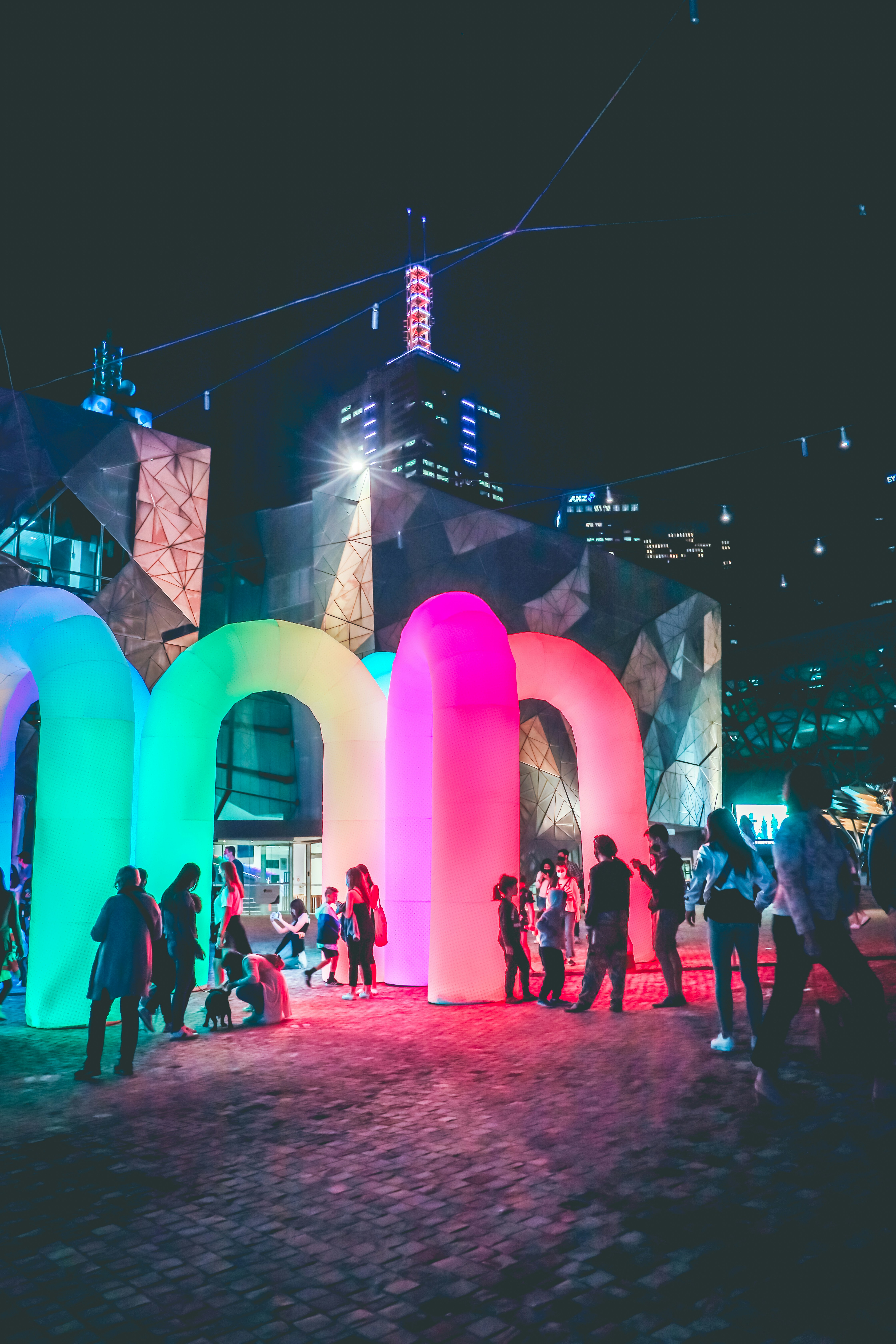
Art in Public Spaces: Sculpture Gardens and Outdoor Installations

Art in Public Spaces: Sculpture Gardens and Outdoor Installations
Introduction to Art in Public Spaces
Public art has always served as a vibrant thread in the fabric of our community, transforming an urban environment into a cultural hub. The essence of public art lies in its accessibility; it’s art for everyone, regardless of socio-economic status.
The history of public art is as intriguing as its impact. From ancient sculptures and monuments that honored gods and heroes to contemporary public art installations that challenge viewers to reflect on social issues, public art’s evolution mirrors society’s evolution.
This progress has given rise to various forms, from statues and murals to digital installations and environmental works, each adding depth and dialogue to a public space.
At its core, public art creates a unique identity for a neighborhood. It acts as a cultural magnet, drawing people together and encouraging ownership and pride in their surroundings.

The Role and Impact of Sculpture Gardens
Understanding sculpture gardens’ cultural and community benefits sheds light on why these spaces are so important in society. Sculpture gardens are spaces where art is displayed outdoors, as well as vibrant cultural exchange and education sites.
Benefits of sculpture gardens
These gardens often act as open-air galleries where the public can engage with art in a more relaxed and accessible environment than traditional museums. This accessibility helps demystify art, making it available and enjoyable for people from all walks of life. Consequently, sculpture gardens can play a crucial role in fostering a broader appreciation of art and culture within the community.
They provide a space to reflect on artistic endeavors and their implications for societal values and human emotions. Furthermore, sculpture gardens can also act as venues for cultural events and programs, enhancing cultural literacy and contributing to a community’s cultural vibrancy.
The community benefits of sculpture gardens and public art extend beyond cultural enrichment. These spaces often become hubs for community interaction and engagement, promoting social cohesion and well-being. They offer a serene refuge from the hustle and bustle of daily life, where individuals can connect with nature, art, and each other.
By hosting educational programs, workshops, and guided tours, these gardens also contribute to lifelong learning opportunities for individuals of all ages. Additionally, they can boost local economies by attracting tourists and supporting local businesses, making them valuable assets for city development.
As dynamic and inclusive spaces, they play a crucial role in enhancing public spaces and improving the quality of life.
An art park demonstrates how art can be integrated into daily life, encouraging people to engage with the world around them through a creative lens. In doing so, sculpture gardens enrich personal and communal experiences and catalyze cultural understanding, dialogue, and transformation.
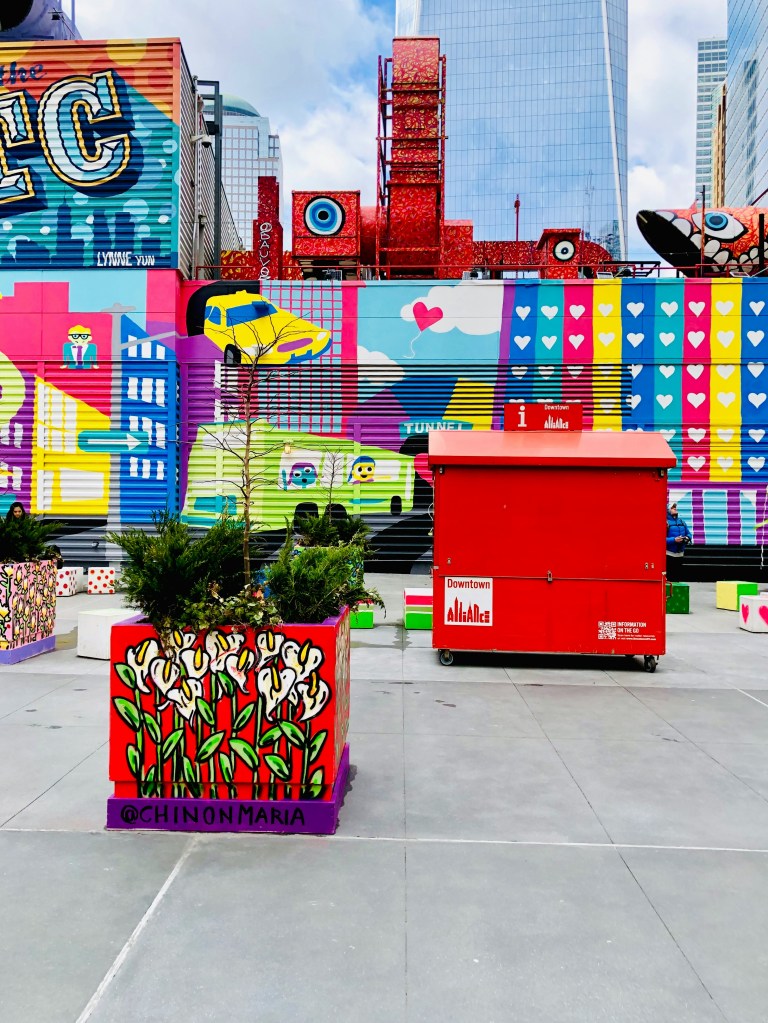
Iconic Examples of Sculpture Gardens Worldwide
Sculpture parks represent a unique intersection of public art and visual art, where the beauty of nature and human creativity come together, captivating visitors from around the globe. These spaces are carefully curated to showcase monumental artworks, offering serene retreats for reflection and dynamic environments to connect with the natural world.
Moreover, these parks feature iconic sculptures and distinctive elements, elevating them to must-visit landmarks for art enthusiasts and tourists. The blend of public art and visual art within these gardens enhances the landscape and enriches the cultural fabric of communities, making art accessible to all.
Iconic sculpture gardens
Las Pozas, in Xilitla, Mexico, is a surrealistic masterpiece created by the eccentric English poet Edward James. The sprawling garden features over 30 surrealist sculptures and architectural structures nestled in lush surroundings, blending natural and artificial elements to mesmerize visitors.
The Gardens of Bomarzo, located in Lazio, Italy, known as the Park of Monsters, feature grotesque sculptures from the 16th century, commissioned by Prince Pier Francesco Orsini to express his grief. Today, they offer insight into the era’s artistic trends and Orsini’s tragedy.
The Rock Garden in Chandigarh, India, is a stunning display of creativity and recycling. Created by Nek Chand, it features sculptures made from industrial and home waste materials, showcasing the beauty of transformation and second chances.
The Hill of Witches in Joudkrante, Lithuania, features over 80 wooden sculptures depicting characters from Lithuanian mythology and fairy tales. It offers a mystical experience and serves as a cultural treasure, preserving the stories and beliefs that have shaped the Lithuanian identity over centuries.
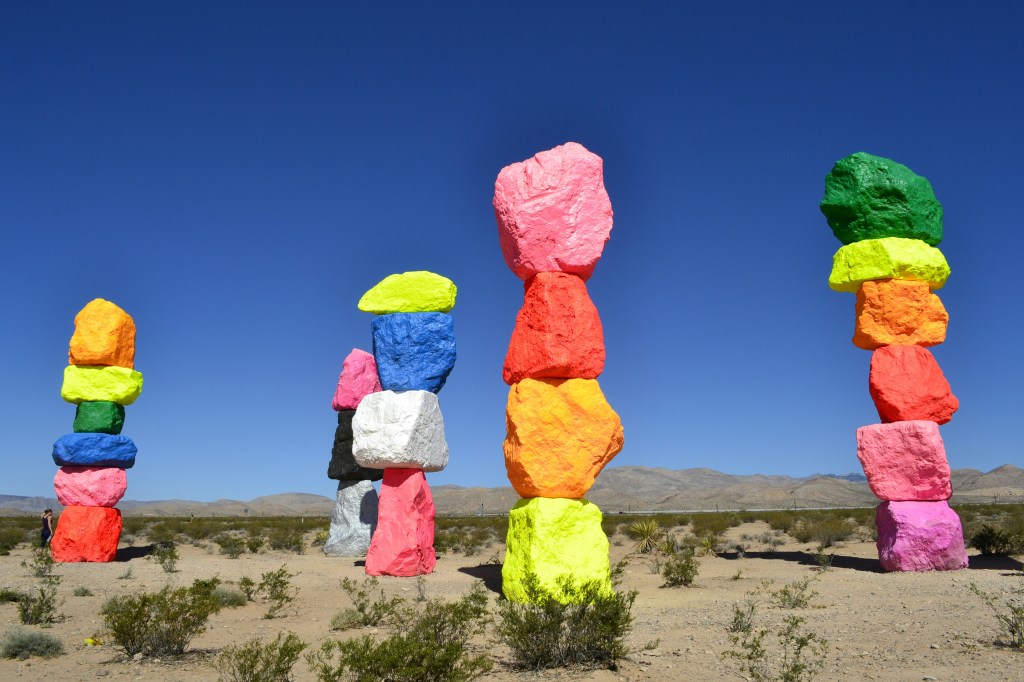
The Artistic Appeal of Outdoor Installations
In recent years, integrating outdoor art installations into the public realm has transformed community engagement and combating climate change through environmental sustainability.
An art installation ranges from public artworks to innovative sculptures that challenge our perspective, making public spaces inviting and engaging to the general public.
Outdoor art impact
Public art installations can transform ordinary spaces into extraordinary spaces. Public artwork, like murals, depicts an area’s history, culture, or social issues. This type of visual art storytelling fosters a sense of community pride and identity, making public art an integral part of daily life.
The sustainability factor of these installations cannot be understated. Many artists are increasingly mindful of the environmental impact of their artwork and choose to incorporate recycled or mixed materials. This reduces waste and conveys a message about the importance of sustainability, inspiring a neighborhood to think more critically about its environmental footprint.
Art in a public space can promote wellness and encourage physical activity. A prime example of this is New York City’s High Line. What was once an abandoned elevated railway has been transformed into a bustling urban park adorned with various art installations.
This unique combination of art and nature invites visitors to take leisurely walks, enjoy the green spaces, and engage with the art while contributing to their physical and mental well-being.
The impact of outdoor art installations in the public realm is multifaceted. They enhance the visual landscape and our cultural, social, and environmental fabric.
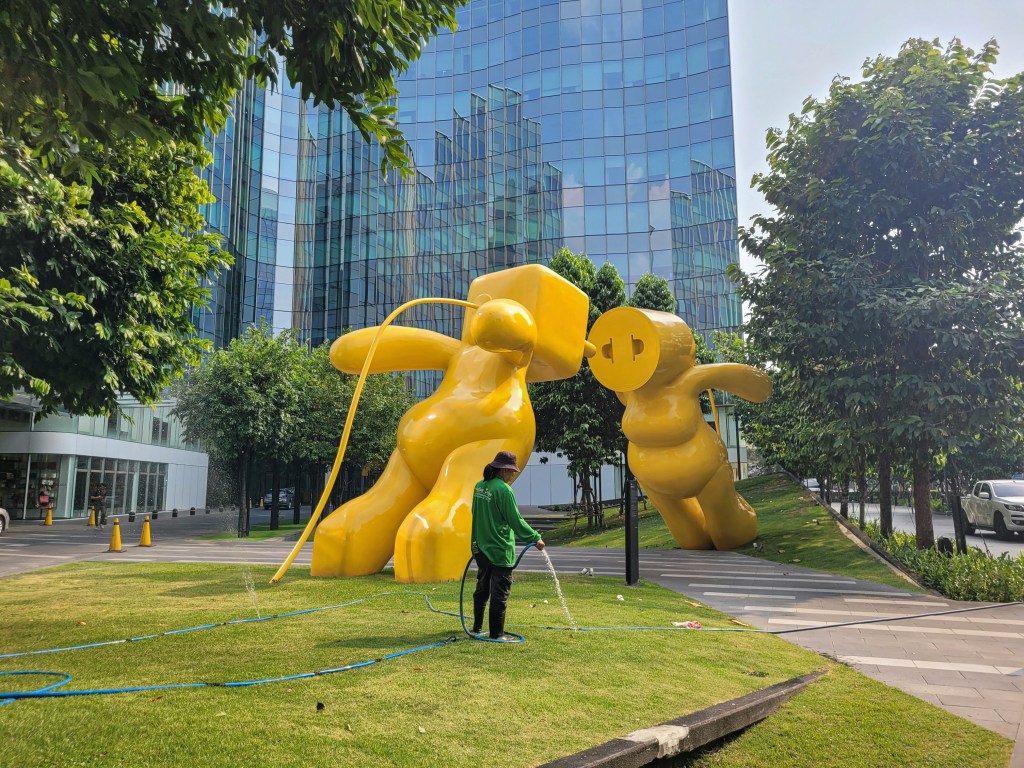
Challenges and Considerations in Creating Public Art
Public art projects present a blend of practicality and artistry, bringing challenges. These public artworks encompass the art of creation and many logistical considerations.
Public art challenges
It is crucial to select the right artist or artists who have experience with large-scale outdoor art projects and are familiar with materials that can withstand outdoor elements. The site selection process must also consider environmental factors, accessibility, visibility, and vulnerability to vandalism.
Finding the perfect artist for a public art project entails thoroughly evaluating their portfolio to ensure their work aligns with the project’s scale and the outdoor environment. This means considering whether the materials used are durable and suitable for outdoor display.
On the other hand, site selection focuses on the art’s interaction with its environment. The chosen location should be safe, free from natural hazards like flooding, and accessible and recognizable. The potential for vandalism is another critical factor in ensuring the art remains preserved for appreciation.
The design phase incorporates public opinion, ensuring that the final piece resonates with the community and is appropriate for public interaction. This phase must address safety concerns, especially if the artwork encourages physical engagement.
Following the creative process, legal agreements are crucial in formalizing the relationship between the artist and the commissioning body. These contracts meticulously detail the project scope, encompassing the timeline, financial agreements, liability issues, insurance requirements, maintenance responsibilities, and the conditions under which the artwork may enter the public domain post-display.
Public art funding is often sourced from a combination of public art funds, charity contributions, state and local grants, non-profit organizations, and even crowdfunding efforts.
These financial avenues provide the necessary support to bring public art projects to life, enriching a neighborhood by transforming shared spaces into expressions of collective identity and creativity.
Interactive and Community-Centered Art Projects
An interactive installation significantly engages and enriches communities, transforming public spaces into hubs of creativity and interaction.
These installations, from interactive public art and community art projects to community-centered art, beautify the urban landscape and foster a sense of belonging and cultural identity among the residents.
Interactive installations
The modern era has seen a shift towards experience consumption over material consumption. This shift is poignantly reflected in the preference for engaging public art and interactive installations that offer experiences rather than just visual appeal.
Such installations do more than entertain; they offer a platform for reflection, dialogue, and learning, enriching the community’s cultural fabric. These projects break down barriers by encouraging people to interact with public art and each other, creating a more inclusive and connected community.
Introducing an interactive installation in the heart of a city or a bustling public square can transform the area into a lively and vibrant public space that attracts people. This influx of visitors brings life and energy to the area and supports local businesses, encouraging patronage and stimulating the local economy.
An interactive installation helps foster a new appreciation for the region, highlighting its uniqueness and enhancing the sense of pride among its inhabitants. Through the clever integration of art and interaction, interactive installations catalyze social and economic rejuvenation, proving invaluable assets to communities worldwide.
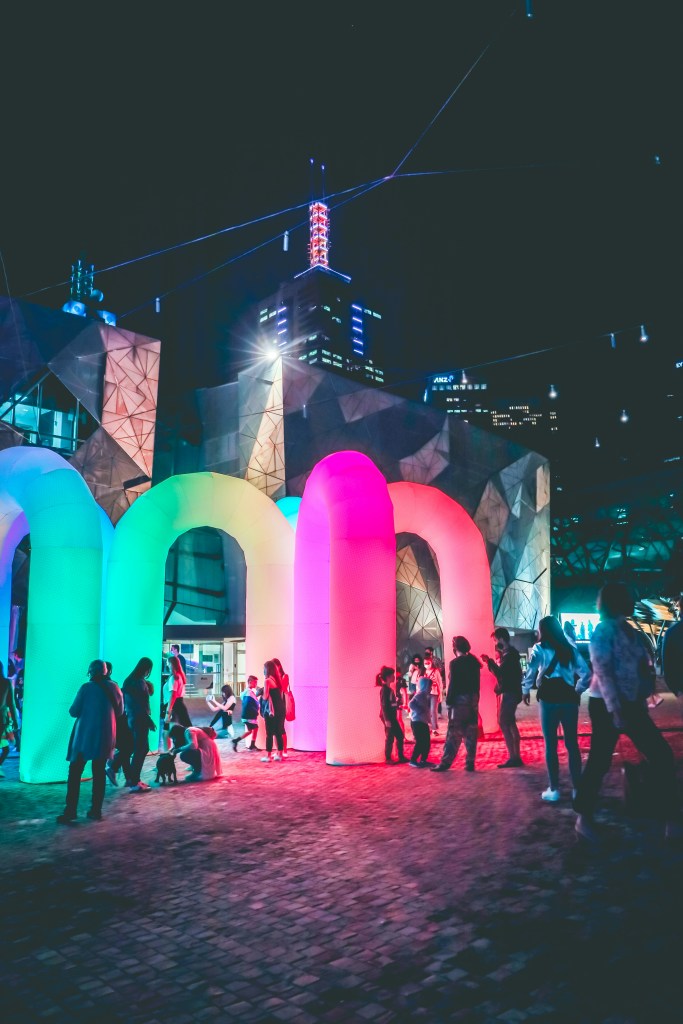
Future Trends in Public Art and Outdoor Installations
Exploring emerging trends and the future landscape of public art reveals a fascinating intersection of creativity, community engagement, and technological innovation.
As we delve into the future of public art, several key trends that promise to redefine our interaction and experience with outdoor art are taking shape.
Emerging public art installations
One of the most significant emerging public art trends is integrating digital technology, enabling immersive experiences for the viewer. This innovative approach allows for a dynamic interaction between the artwork and its audience, making art more accessible and engaging.
From augmented reality installations that transform our perception of space to engaging sculptures that change with audience participation, the boundaries of creativity are constantly expanding.
Another noteworthy trend is the emphasis on sustainability and environmental consciousness within public art collaboration. Artists and designers increasingly use recycled materials and focus on themes that highlight ecological concerns.
Public artwork serves as a visual feast and a poignant reminder of our shared responsibility toward the planet. By weaving environmental narratives, it engages communities in meaningful conversations about sustainability.
Furthermore, the future of outdoor art sees a stronger focus on inclusivity and representation. Public art is becoming a platform for historically marginalized voices, empowering artists from diverse backgrounds to share their stories and perspectives.
This shift enriches the cultural landscape and fosters a sense of belonging and identity within communities. Through inclusive public art, cities can celebrate diversity and encourage empathy among their inhabitants.
Sources
https://eastendarts.org/art-in-public-spaces/#:~:text=Art%20in%20public%20spaces%20invites,fosters%20a%20sense%20of%20belonging.
https://www.artandobject.com/articles/why-how-and-where-sculpture-parks
https://thespaces.com/worlds-most-spectacular-sculpture-gardens/
https://fastercapital.com/content/Outdoor-Art–Artistic-Appeal–Adding-Outdoor-Art-to-Enhance-Your-Curb.html
https://www.crt.state.la.us/dataprojects/arts/PublicArtHandbook/appendix/APX_Guides_Tips.htm
https://www.citynationplace.com/interactive-art-a-catalyst-for-urban-revival-and-community-engagement
https://www.artelier.com/post/70-top-contemporary-public-art-around-the-world
About Collectibles Insurance Services
Collectibles Insurance Services has been protecting collections since 1966 and all coverage is provided by a carrier with a group rating of “A” (Excellent) by AM Best, the leading rating agency for the insurance industry.
Comprehensive coverage includes, but is not limited to: accidental breakage, burglary, fire, flood, loss in the mail, theft, natural disasters, and other causes of loss unless specifically excluded from the policy. Deductibles start at $0 for collector policies and we provide coverage for the market value of your collection for losses in excess of $50.
Additionally the protection extends At home and away, and we don't require collection itemization and serial number nor extensive paperwork and red tape.
